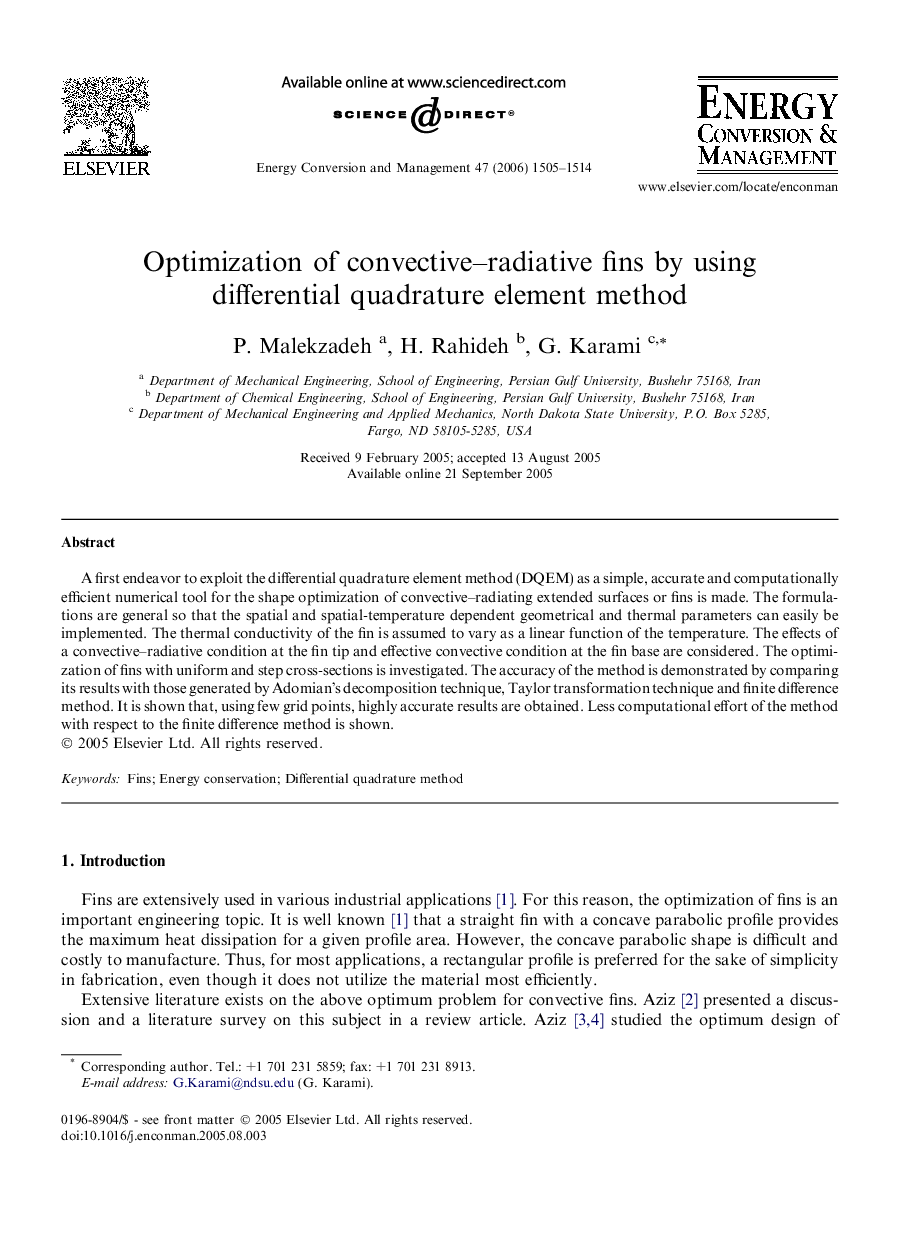| Article ID | Journal | Published Year | Pages | File Type |
|---|---|---|---|---|
| 762376 | Energy Conversion and Management | 2006 | 10 Pages |
A first endeavor to exploit the differential quadrature element method (DQEM) as a simple, accurate and computationally efficient numerical tool for the shape optimization of convective–radiating extended surfaces or fins is made. The formulations are general so that the spatial and spatial-temperature dependent geometrical and thermal parameters can easily be implemented. The thermal conductivity of the fin is assumed to vary as a linear function of the temperature. The effects of a convective–radiative condition at the fin tip and effective convective condition at the fin base are considered. The optimization of fins with uniform and step cross-sections is investigated. The accuracy of the method is demonstrated by comparing its results with those generated by Adomian’s decomposition technique, Taylor transformation technique and finite difference method. It is shown that, using few grid points, highly accurate results are obtained. Less computational effort of the method with respect to the finite difference method is shown.
